Introduction: Why the Right Male Model Workout Plan Matters
The pursuit of a lean, powerful, and camera-ready body has long been synonymous with the world of modeling. For many aspiring or professional models, achieving a physique that is both sculpted and athletic isn’t just a vanity project—it’s a career requirement. This is where a well-structured male model workout plan becomes indispensable. Unlike typical bodybuilding regimens focused solely on bulk, a model workout routine male athletes follow emphasizes symmetry, definition, and function. This guide explores the advanced principles, scientific strategies, and sustainable approaches that define the ultimate male model workout plan, helping men not only look the part but move and perform with confidence and control.
You may also like: The Ultimate 30-Day Workout Plan for Men Working Out in the Gym: Proven Full Body Strength Exercises to Maximize Results
Foundations of the Male Model Physique: Balance, Symmetry, and Function
What sets a male model physique apart isn’t sheer size, but balance. Every part of the body must harmonize with the others, creating aesthetic lines without exaggeration. Models are expected to maintain lean mass, avoid disproportionate muscle groups, and minimize body fat. Therefore, the male model workout plan must emphasize core strength, postural alignment, and proportional development.
Functionality is equally important. Modeling often requires long hours of standing, posing, or walking, which can strain the body if muscular endurance and mobility aren’t cultivated. As a result, training should include dynamic warm-ups, compound lifts, and bodyweight stabilization exercises. A model workout routine male athletes adopt is not about excess but about refinement—building the kind of strength that supports athletic movement, professional stamina, and visual symmetry.
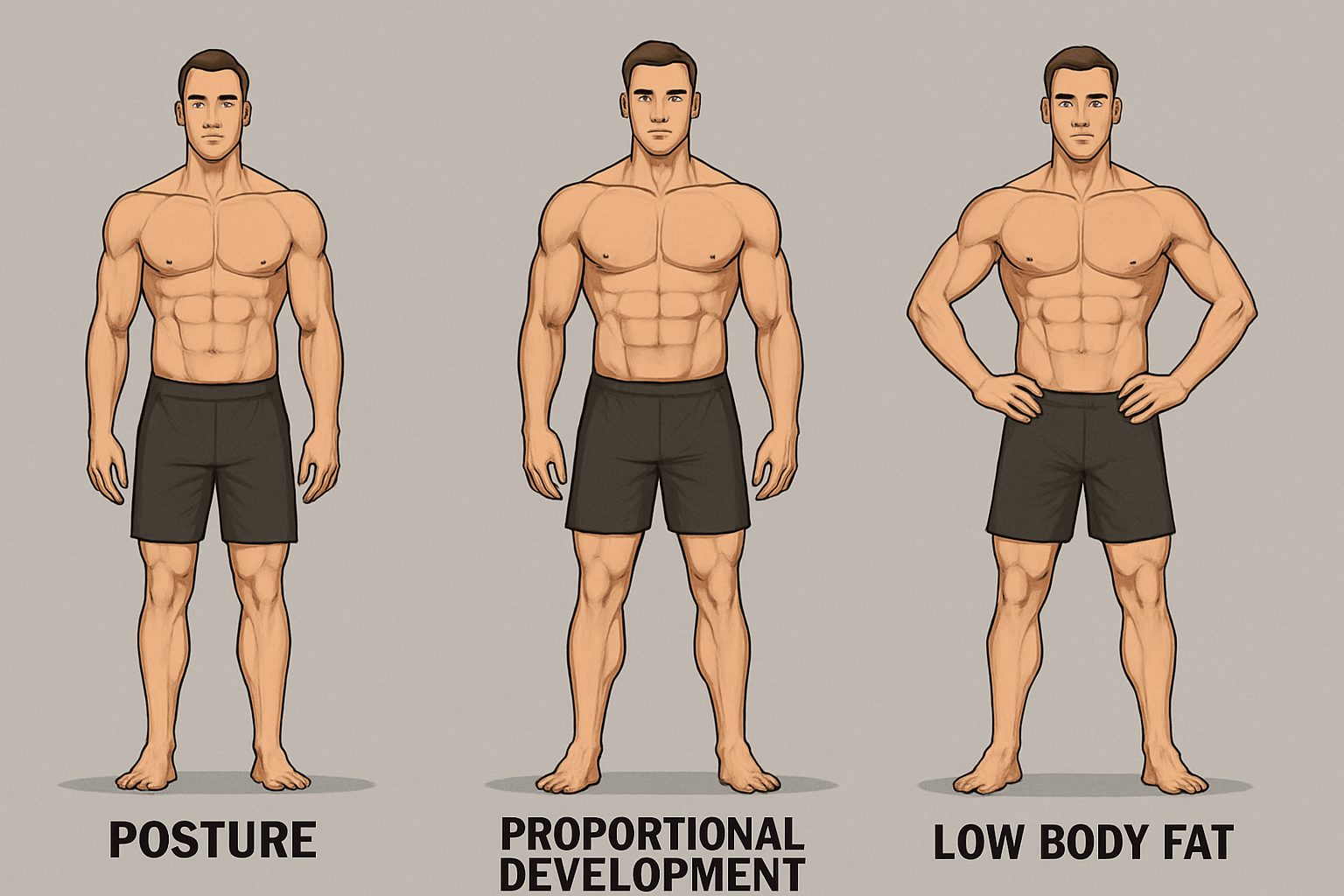
Structuring the Male Model Workout Plan for Maximum Efficiency
Time efficiency is key in the modeling world where schedules are unpredictable. Therefore, the male model workout plan should be structured to deliver maximal return in minimal time. Most sessions should last 45 to 60 minutes and ideally be performed four to five times per week. These workouts typically alternate between upper and lower body, or push-pull splits, to allow recovery while maintaining high frequency.
Each session begins with a mobility and activation phase—foam rolling, dynamic stretches, and muscle priming. Strength work comes next, usually centered around one or two key compound lifts performed with moderate intensity and impeccable form. This is followed by accessory movements targeting aesthetics and symmetry, such as cable flyes, lateral raises, and hamstring curls. Finally, conditioning circuits or core-focused finishers enhance athleticism and fat oxidation. This format aligns seamlessly with a model workout routine male professionals can maintain consistently without burnout.
Key Strength Movements in a Male Model Workout Plan
While many associate strength training with size, in a male model workout plan, it’s used to improve tone, shape, and posture. The foundational lifts should still be present, albeit modified. Deadlifts are included, but often in Romanian or sumo variations to target glutes and hamstrings without excessive spinal loading. Front squats replace back squats to maintain upright posture and develop core strength. Pull-ups, dips, and push-ups are staples, with variations added for complexity and control.
Rows are favored over bench press to improve posture and reduce internal shoulder rotation—a common issue in men training solely for chest development. Landmine presses and cable crossovers help sculpt the deltoids and upper chest for that sought-after V-taper. Overall, the focus remains on functionality, line development, and keeping joints healthy. Every movement serves a dual purpose: enhancing physique aesthetics while promoting long-term structural resilience.
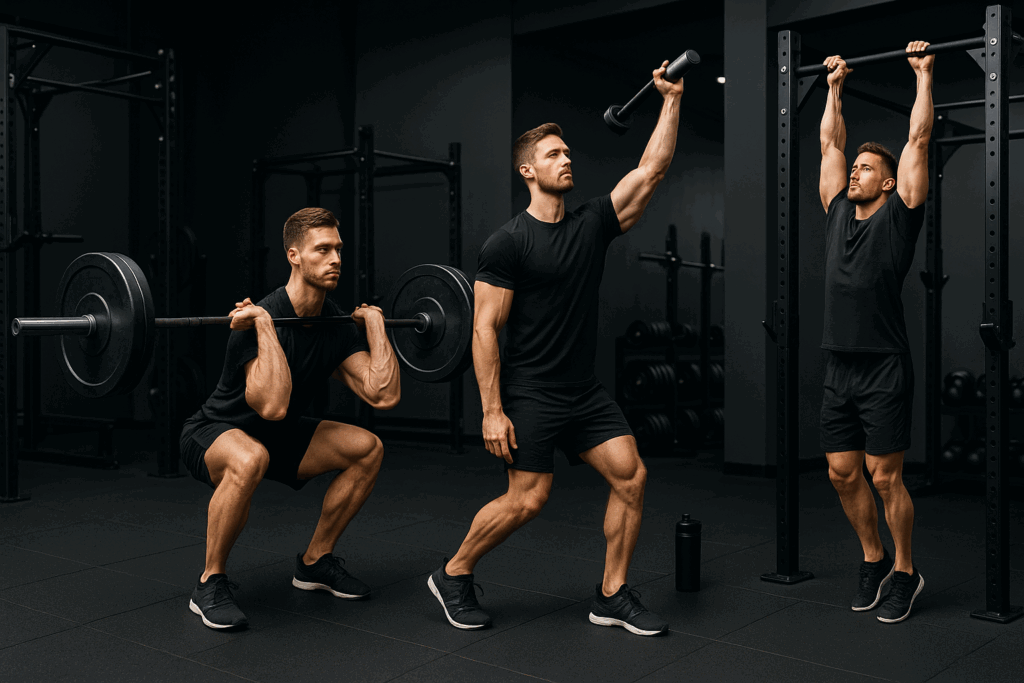
Core Training: The Centerpiece of Every Model Workout Routine Male Athletes Use
A well-developed core is the hallmark of any male model physique. But this goes far beyond crunches or ab machines. A model workout routine male professionals rely on includes rotational work, anti-extension, and anti-rotation training to stabilize the spine and enhance movement efficiency. Planks, hanging leg raises, Russian twists, and Pallof presses are all fundamental.
Core work should be integrated throughout the workout, not just at the end. Squats, deadlifts, and even single-arm rows demand core stability and should be treated as such. Additionally, training the transverse abdominis and obliques helps achieve that lean, cinched waist appearance prized on the runway or in fitness campaigns. A strong core is also vital for injury prevention and posture maintenance during long shoots or travel. For a male model, core strength is more than vanity—it’s professional survival.
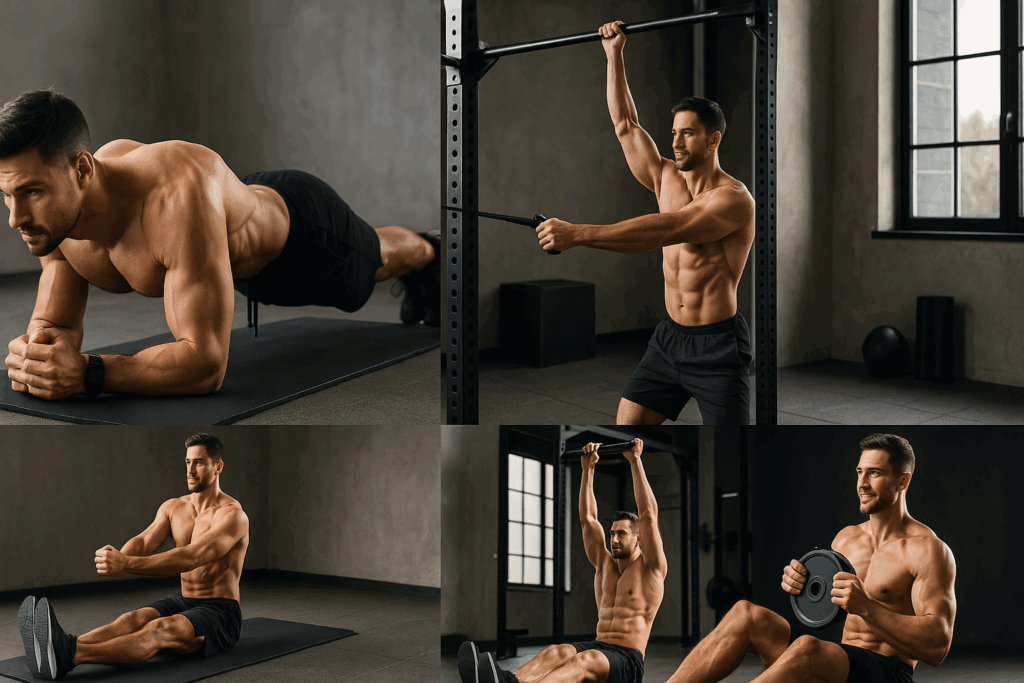
Cardiovascular Conditioning and Fat Loss Strategy
For lean muscle visibility, low body fat is essential. However, the model workout routine male physiques require avoids chronic cardio in favor of smarter conditioning. High-Intensity Interval Training (HIIT), circuit-based resistance workouts, and steady-state walking form the foundation. These methods support fat burning while preserving muscle mass and keeping stress hormones like cortisol in check.
Morning fasted walks, post-workout stair climbing, and interval sprints are popular among male models looking to cut fat without sacrificing aesthetics. These strategies also improve cardiovascular fitness, which enhances overall wellness and energy levels on demanding days. Importantly, fat loss is driven more by diet than exercise, so cardio should be used to augment a well-balanced nutritional plan rather than compensate for poor eating habits.

Nutrition Essentials for a Lean, Model-Ready Body
No male model workout plan is complete without addressing nutrition. The goal is to support muscle retention while minimizing fat gain. Protein should be consumed at roughly 1.6 to 2.2 grams per kilogram of body weight per day, spaced evenly across meals. Lean meats, fish, eggs, and plant-based proteins provide essential amino acids. Carbohydrates are not the enemy—they fuel training, cognitive performance, and recovery.
Complex carbs like quinoa, oats, and sweet potatoes are prioritized, especially around workouts. Healthy fats from avocados, nuts, seeds, and olive oil support hormonal balance and skin health—a critical factor for models whose appearance is under constant scrutiny. Hydration is equally vital; dehydration can flatten the physique, reduce energy, and affect skin clarity. Avoiding excessive sodium, alcohol, and processed foods preserves definition and reduces bloating. Meal prep, tracking intake, and consulting with a nutritionist can elevate consistency and optimize performance.
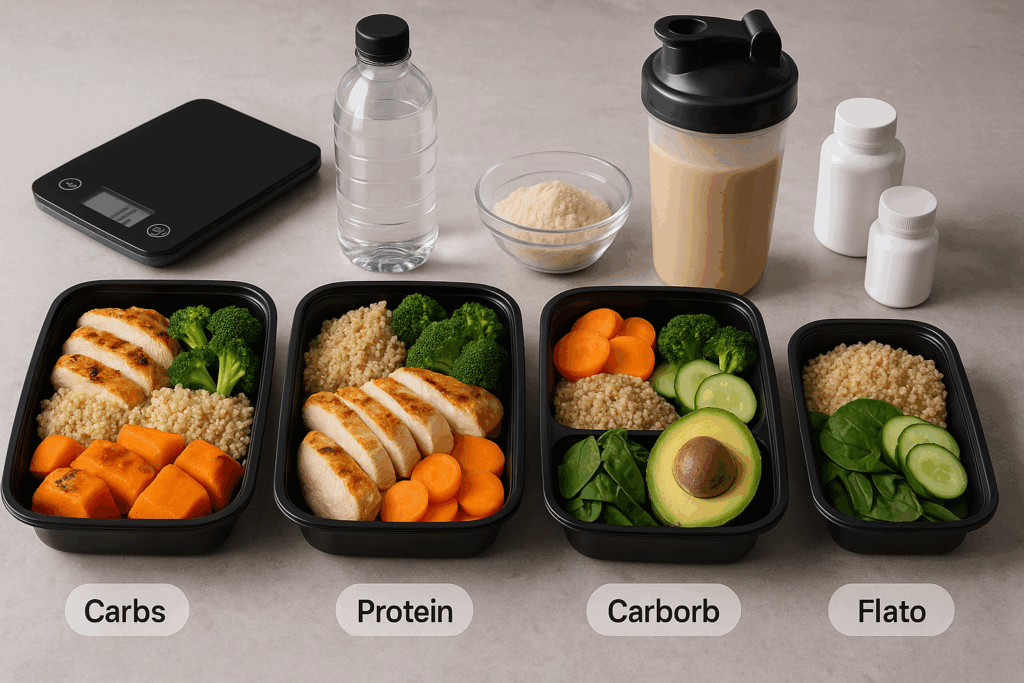
Recovery Protocols to Enhance Results and Maintain Longevity
Aesthetics without recovery is a recipe for burnout. In the modeling industry, where stress, travel, and inconsistent sleep are common, recovery practices are paramount. Every male model workout plan should include built-in rest days, mobility sessions, and sleep optimization. Aim for seven to nine hours of quality sleep per night, and consider napping on high-volume days or during travel.
Massage, foam rolling, stretching, and yoga accelerate recovery and maintain joint health. Supplements like magnesium, ashwagandha, and omega-3s support systemic recovery and reduce inflammation. Cold exposure and contrast showers are also gaining popularity for their role in promoting parasympathetic recovery. Ultimately, models who recover well perform better, look sharper, and maintain their physiques longer than those who neglect this critical element.
The Role of Genetics and Managing Expectations
It must be acknowledged that genetics play a role in physique potential. Some individuals naturally carry muscle in the right places, maintain low body fat, or have a high metabolism. That said, the right male model workout plan can optimize any body type. Ectomorphs may need to eat more frequently and emphasize hypertrophy training. Endomorphs benefit from stricter carb cycling and more cardio. Mesomorphs should guard against overtraining and aesthetic imbalance.
Models must manage expectations: building a physique that looks great on camera requires more than just hard work—it requires patience, strategy, and consistency. Comparing oneself to others, especially filtered and posed images, is unproductive. Instead, track progress through strength benchmarks, tape measurements, and how clothing fits. Celebrate steady, realistic improvements that reflect hard-earned progress.
Sample Weekly Male Model Workout Plan for Optimal Conditioning
To put theory into practice, here is a breakdown of a sample weekly training split. This sample reflects a typical model workout routine male trainees can adapt:
- Monday: Upper Body Strength (Pull emphasis)
- Tuesday: Lower Body Hypertrophy + Core
- Wednesday: Rest or Active Recovery (Mobility + Walking)
- Thursday: Upper Body Hypertrophy (Push emphasis) + HIIT
- Friday: Glute and Hamstring Focus + Abs
- Saturday: Conditioning Circuit (Full Body, Core-centric)
- Sunday: Rest, Sauna, Stretching
This structure balances aesthetics, function, recovery, and fat loss. Adjusting training days and splitting sessions according to individual recovery capacity and scheduling needs is encouraged. The male model workout plan is ultimately about consistency and personalization more than perfection.
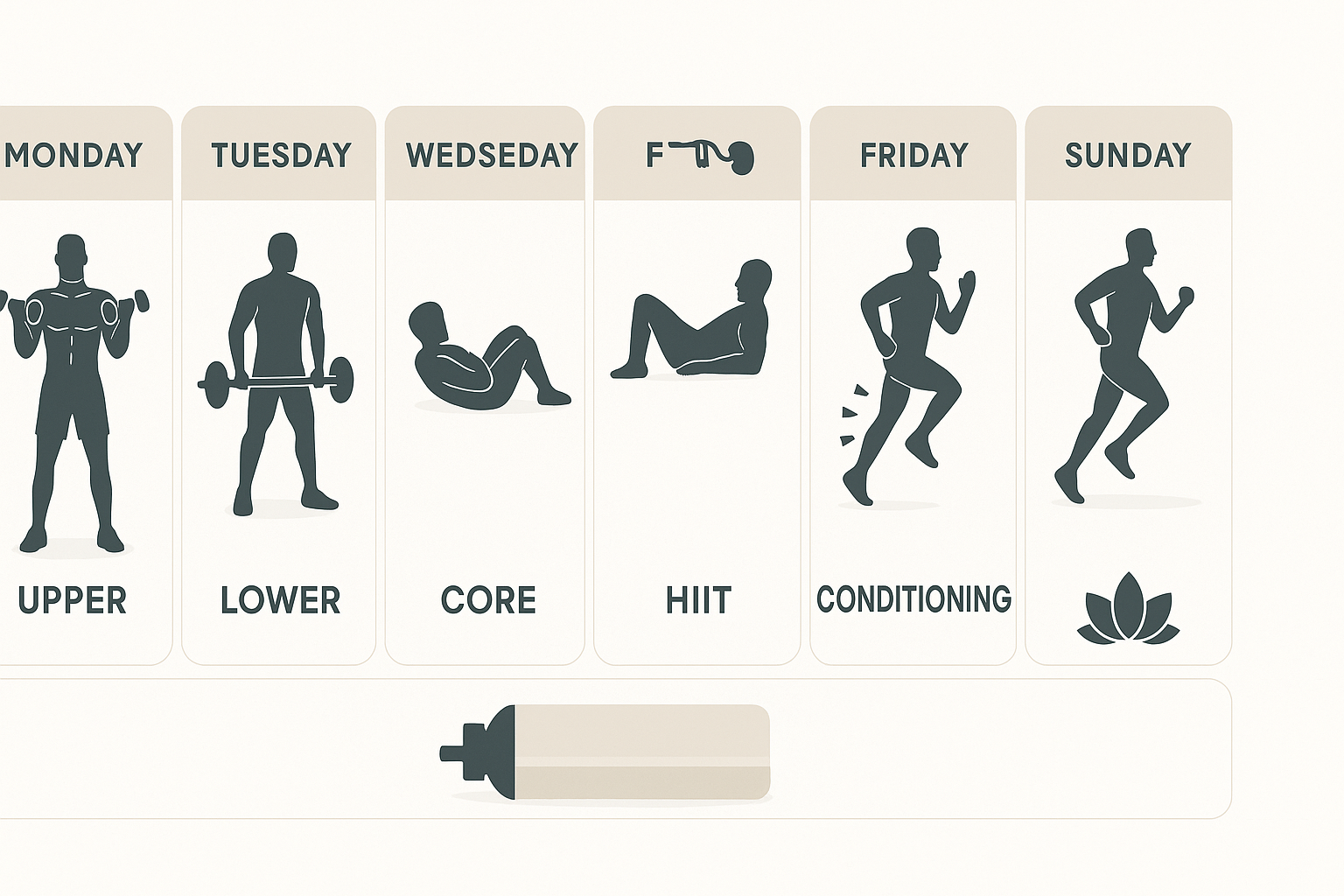
Grooming, Style, and Lifestyle Integration
Fitness alone doesn’t complete the male model image. Grooming, style, and daily habits amplify the effectiveness of a well-trained body. Skin care, hydration, posture, and energy management contribute to a confident presence in front of the camera. Proper grooming—including beard maintenance, haircare, and dental hygiene—enhances facial structure and overall appeal.
Wearing well-fitted clothing that complements the physique reinforces the visual impact of a male model workout plan. Models should also avoid habits that bloat or dull the physique: excessive sugar, alcohol, smoking, and inconsistent sleep all show on camera. Instead, integrate mindfulness, hydration, and breathwork to maintain composure and clarity. Professionalism, punctuality, and mental focus are also part of the modeling package. Lifestyle supports appearance more than any single workout.

Tracking Progress Without Obsession
Metrics matter, but obsession kills progress. Instead of weighing in daily or scrutinizing minor changes in the mirror, focus on weekly progress. Use tape measurements, progress photos, and training logs to measure improvements. Digital tools like fitness apps or smart scales can support but should never dominate the journey.
Mental health and body image are important considerations. A male model workout plan should support self-esteem, not feed insecurity. Positive body image isn’t about perfection but about feeling capable, strong, and aligned with one’s goals. Periodic assessments, coach feedback, and reflective journaling help build perspective and keep motivation intact. Progress tracking should be data-driven, balanced, and aligned with long-term growth.
Frequently Asked Questions About the Ultimate Male Model Workout Plan
1. What Makes a Male Model Workout Plan Different from Standard Fitness Programs?
A male model workout plan differs significantly from traditional bodybuilding or strength programs in both intent and execution. Instead of focusing purely on muscle size or maximum strength, the plan prioritizes balance, definition, and sustainability. Workouts are tailored to maintain a lean physique with minimal bulk, enhancing muscle tone and symmetry rather than exaggerated mass. Additionally, training incorporates functionality and endurance to support long photoshoots, runway appearances, and travel. The ultimate goal is a physique that photographs well from every angle, combining performance with aesthetics in a way that a typical hypertrophy-focused plan may not achieve.
2. How Can I Start a Model Workout Routine Male Professionals Recommend If I’m a Beginner?
Beginners often feel overwhelmed by advanced model routines, but starting is simpler than it seems. A foundational model workout routine male beginners should follow includes full-body workouts three to four days a week, focusing on form, control, and balance. Incorporate bodyweight exercises like push-ups, planks, squats, and lunges before progressing to weighted movements. Emphasize mobility and posture from the outset—many models rely on yoga or dynamic stretching as part of their baseline routine. Most importantly, adopt a lifestyle mindset early, including hydration, sleep, and balanced eating, which are just as crucial as gym time for a model-ready physique.
3. Can You Build Muscle and Still Stay Lean on a Male Model Workout Plan?
Yes, and in fact, this is one of the key goals of a male model workout plan. Muscle building on this plan involves moderate resistance, higher time-under-tension, and metabolic resistance training, which stimulates muscle growth without excessive hypertrophy. Staying lean involves careful nutrition, proper rest, and strategic cardio—often in the form of short, intense sessions or daily walks. Models aim to maintain an athletic build with visible definition, not bulk. The balance between resistance training and active recovery ensures lean muscle is preserved while body fat remains low.
4. How Do Genetics Influence Success on a Model Workout Routine Male Athletes Use?
Genetics undoubtedly influence physique potential, but they don’t determine success. Some individuals naturally carry more symmetrical muscle distribution or lean out faster. However, a model workout routine male athletes follow is designed to improve any starting point. Ectomorphs (naturally lean individuals) may need more calories and strength work, while endomorphs (those who gain fat easily) require more careful macronutrient control and conditioning. Progress depends more on consistency and tailored programming than genetic predisposition. Most models benefit from understanding their body type and optimizing training around it rather than chasing someone else’s results.
5. Why Is Core Stability a Priority in a Male Model Workout Plan?
Core stability is central to the male model workout plan because it influences posture, balance, and visual proportions. A strong core ensures that the abdominal muscles are both defined and functional, supporting a tapered, narrow waist and upright stance. More importantly, core stability helps prevent injuries in the lower back and hips, which is critical when traveling frequently or standing for long hours on set. Models rely on core exercises that involve dynamic control, such as planks, stability ball work, and rotational movements. These exercises build deeper core engagement than basic crunches, leading to a more naturally defined midsection and improved athleticism.
6. How Should Nutrition Be Adjusted to Support a Model Workout Routine Male Professionals Follow?
Nutrition is not just supportive—it’s integral to the success of any model workout routine male athletes embrace. The focus is on high-protein, nutrient-dense meals that support muscle repair while maintaining energy balance. Carbohydrates are used strategically around workouts to fuel performance and recovery without causing unnecessary fat storage. Healthy fats are included for hormonal health and skin clarity. Timing also matters: eating whole foods every 3–4 hours stabilizes energy and prevents overeating. Models often work with nutritionists to fine-tune micronutrient intake, reduce bloating, and maintain optimal hydration for consistent performance and appearance.
7. What Role Does Mobility Play in the Male Model Workout Plan?
Mobility is a cornerstone of the male model workout plan, though it’s often overlooked in traditional fitness programs. Superior mobility ensures fluid movement during runway walks and long photoshoots, where joint stiffness or tightness can visibly affect performance. Incorporating exercises like deep lunges, shoulder dislocates, and thoracic spine mobility drills helps models maintain posture and alignment. This prevents overuse injuries and enhances muscle definition by improving joint angles during training. Daily mobility work, even just 10 to 15 minutes, complements strength training by improving form and muscle activation.
8. How Does a Male Model Manage Overtraining or Fatigue?
Fatigue is common in intensive training routines, and the male model workout plan addresses this through strategic deloading, rest days, and active recovery. Overtraining is avoided by rotating workout intensity and ensuring adequate recovery from both physical and lifestyle stressors. Models often integrate tools like HRV (heart rate variability) tracking, sleep monitoring, and subjective wellness scoring to gauge readiness. Active recovery methods—such as foam rolling, swimming, yoga, and walking—support circulation and reduce stress. By tuning into physiological signals and respecting recovery, models extend the longevity of their performance and physique.
9. What Are the Best Supplements to Complement a Model Workout Routine Male Athletes Use?
Supplements can be useful but should never replace whole foods. In the context of a model workout routine male professionals use, foundational supplements include whey protein for post-workout recovery, creatine monohydrate for performance, and omega-3s for inflammation control. Magnesium and zinc are critical for hormonal regulation and muscle recovery, while a multivitamin ensures baseline micronutrient coverage. For skin health and stress management, some models use collagen peptides and adaptogens like ashwagandha. However, supplement choices should be personalized based on lab work, diet gaps, and overall training volume. Consulting a certified nutrition coach is recommended before starting any new regimen.
10. How Can You Sustain Long-Term Success with a Male Model Workout Plan?
Sustainability lies in smart design, flexibility, and intrinsic motivation. A male model workout plan that evolves with your life—adjusting to travel, work stress, or seasonal goals—will always outperform rigid schedules. The key is to think of fitness as a lifestyle, not a temporary transformation. This means prioritizing sleep, consistent meal prep, regular check-ins, and honest reflection about goals. It also involves cultivating habits that reinforce discipline: morning routines, workout tracking, and social support. Ultimately, sustaining the physique of a male model is not about chasing perfection but about mastering consistency and continually refining the plan to meet new challenges.
Conclusion: Redefining Confidence Through the Male Model Workout Plan
The modern male model is not just a pretty face. He is athletic, composed, resilient, and intentional. The male model workout plan represents a roadmap not just to aesthetic mastery but to personal refinement. It emphasizes strength without bulk, endurance without burnout, and presence without arrogance.
Through strategic training, nutritional wisdom, and recovery excellence, any man can begin to embody the physical traits admired on runways and in magazines. But more importantly, he can cultivate the inner qualities—discipline, confidence, purpose—that shape a magnetic presence. The ultimate model workout routine male professionals follow isn’t just about looks. It’s about building a version of yourself that shows up powerfully on and off the camera, every single day.
The transformation begins not with a perfect body, but with a committed plan. This is your invitation to rise—strong, lean, powerful, and ready to lead.
Further Reading:
The Juan Betancourt Workout For His Aesthetic Male Model Body





